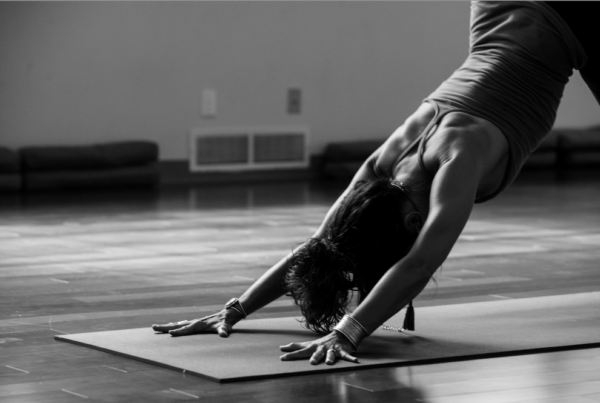
We’re Celebrating international women’s day by busting these 5 myths related to women’s fitness!
If I were to collect an euro for every time since I started my long and arduous fitness journey in my twenties that I was told not to weight train (or train with super-light weights if I had to), I would probably have enough money to open my own gym right now. Fortunately, I had the opportunity to test this theory thanks to the pandemic and the lockdowns and gym closures that it caused throughout 2020. I’ve not bulked up, not even close, it suffices to mention.
I’ve been weight training three times a week for 30 minutes under virtually professional supervision for the past seven months. I finally have my own small home squat rack at the age of 45, complete with a range of resistance bands and dumbbells weighing two to seven kg each. For someone with as many assumptions as I do, the outcomes have been astonishing. Although the scale hasn’t moved in the direction I’d hoped it would, I’ve shed inches, grown stronger, and put on muscle. I’ve observed a significant change in my mood, and I appear more toned than I have in years.Walking, practicing yoga or Pilates on the other days, watching my macros, and eating the correct amount of protein have all contributed to my success.
Sumaya Dalmia, a Delhi-based fitness expert and the creator of SUMAYA, and Sohrab Khushrushahi, a Mumbai-based coach and the founder of SOHFIT, debunk some of the most common myths regarding women’s fitness that are currently prevalent.
Myth 1: Strength training will bulk you up!
Experts in medicine claim that men produce 14–20 times more testosterone than women do. Because of this, it is impossible for women to gain muscle mass at nearly the same rate unless they use performance-enhancing medications or steroids, and even then, it is difficult. Bulking up shouldn’t be a concern because we don’t have the same hormones as men, according to Dalmia. The fitness professional emphasizes the value of weight training for female athletes. We not only lose muscle mass as we age and oestrogen levels fall, but we also undergo bone degradation. To maintain bone density, strength exercise with weights weighing between five and seven kg is essential, according to her.
Khushrushahi is clear: strength is in and skinny is out. “This is definitely a tale spun by men who are insecure about women getting fitter and stronger than them. Women for sure need to strength train.” Thankfully, while men have traditionally dominated the strength scene, more women are now lifting and enjoying the benefits of training with iron.
Myth 2: Cardio is the best way to lose weight!
“I’ve noticed, for most women at least, the answer to their weight issues is running or some form of cardio, without actually evaluating if just cardio is helping them in any way,” says Khushrushahi. An ideal workout regimen, says Dalmia, should include two days of steady-state cardio, two days of weight training and two days of either yoga or Pilates. “You need to shock your body and include a variety of different workouts. Once your body gets adapted to one particular type of exercise, it’s as good as doing nothing—you will simply not see any results,” she adds.
Myth 3: Carbs are the enemy and too much protein is harmful
Carbs are anything but the enemy, says Khushrushahi. “The right kind of carbs, fruits, veggies and millets are essential as they fuel your body with the right amount of glucose. There’s absolutely no need to be scared of carbs unless you’re overloading on pizzas and the like,” he says.
Women nearly never consume enough protein each day, according to Dalmia, who also notes that any intake in excess can be harmful. “We need one gram of protein for every kilogram of body weight. So on an average, we need to consume a minimum of 50 to 60 grams a day, which is difficult to achieve if you are not mindful of your diet. You may need to rely on a protein shake to make up the deficit, especially on training days where you need a little more, and this is totally okay. It’s not going to harm you in any way. In fact, it will help you build muscle as well as help with soreness and recovery after your workout,” she says.
Myth 4: The scale is the true marker of success
I have to admit, this is one obsession I still find difficult to let go of and Khushrushahi confirms it is one of the biggest challenges he’s had to face with his female clients. “Their happiness and levels of confidence are linked to that number on the scale when really it should be the last place to look for results,” he explains, “If you’ve eaten a late dinner, or you’ve had extra water or you are just stressed out and feeling bloated, you are bound to go up by a few kilograms, but it is temporary.”
The focus, say both experts, should be on inch and fat loss, gaining strength and energy and feeling and looking great overall. “When you gain muscle mass, you may sometimes gain weight on the scale, but you are losing fat and that’s ultimately what your aim should be—both for health reasons as well as to reach your goal weight,” says Dalmia.
Myth 5: You need to exercise for an hour to see results
With work from home blurring boundaries and the pandemic still keeping people from gyms, working out for long hours has become impossible. And, get this, it’s a good thing. You don’t need to work out even for an hour daily to see results, says Dalmia. “Short, focused 20- to 30- minute daily workouts are more effective. The key is to be consistent, so choose a workout that you enjoy, one that you’ll do every day without distractions, and one that will continue to challenge you.”




















Recent Comments